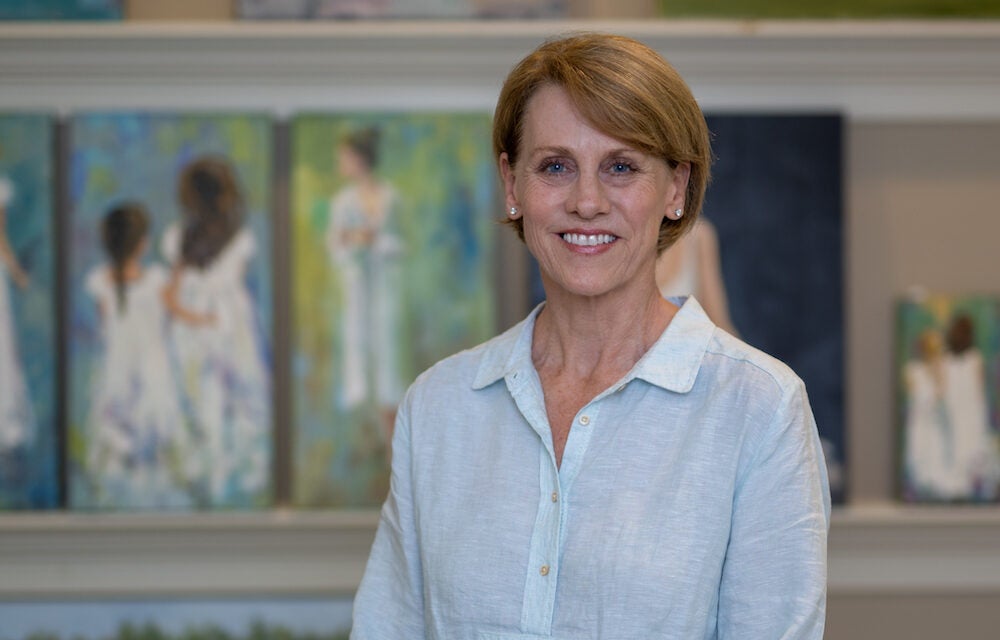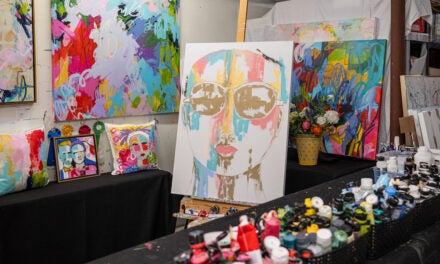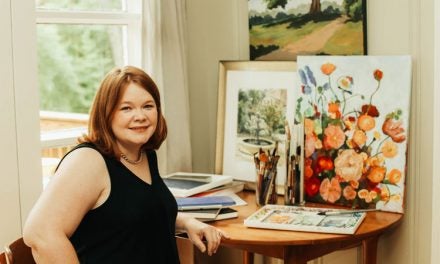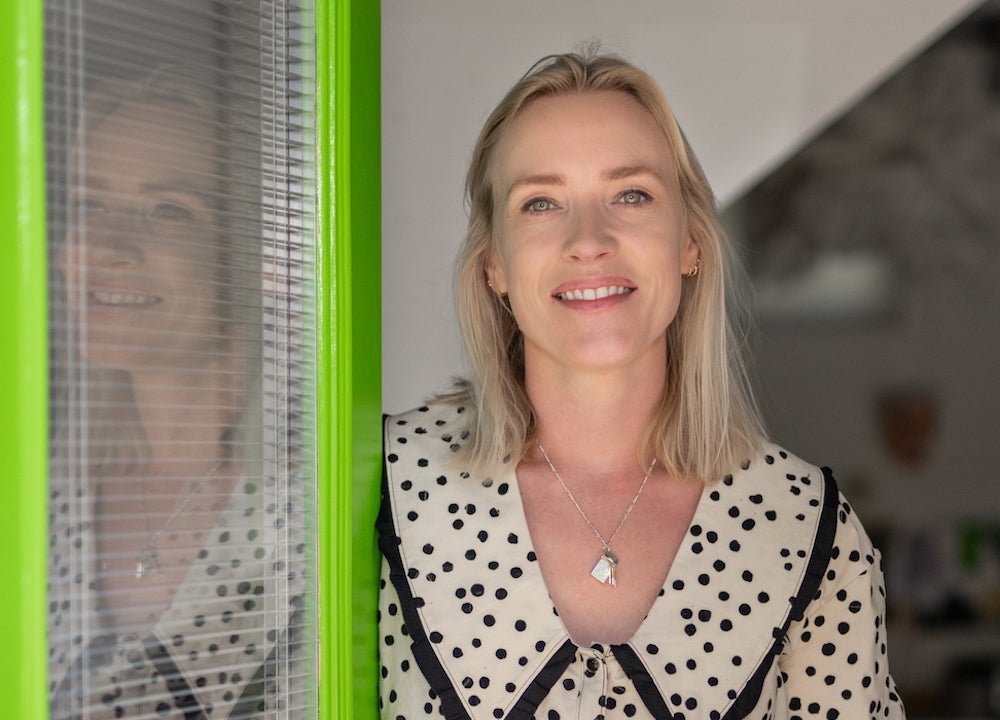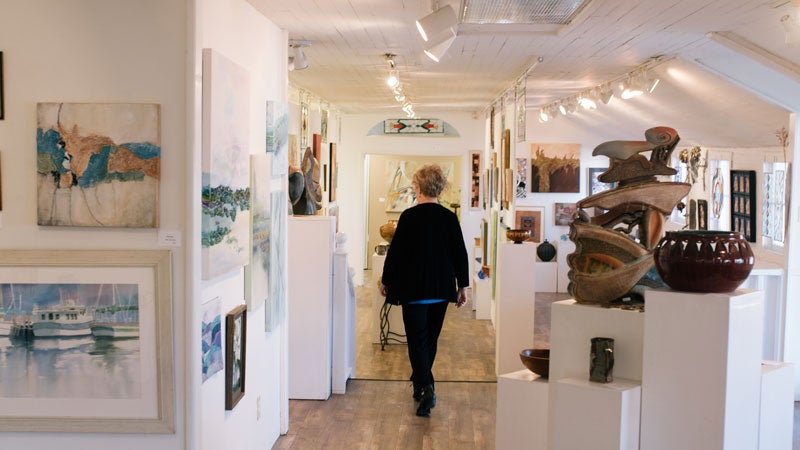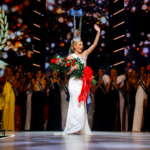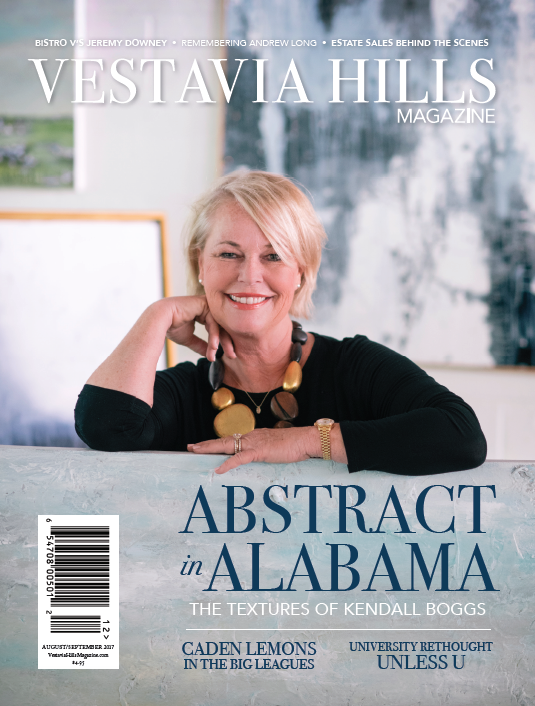By Anna Grace Moore
Photos by Blair Ramsey
Meaningful art weighs heavy in power–such strong enough to inspire open minds to seek out and protect the beauty of this albeit rather broken world. Art–one’s legacy–transcends his time on Earth and shapes societal narratives about what is deemed worthy to be praised.
Vestavia Hills painter and art teacher Carol Carmichael believes that each person holds the ability to create art deep within himself; however, to evoke such emotion on the canvas, one must first learn to appreciate what others often take for granted–nature, the world’s first blank canvas.
Carol first moved to Vestavia Hills in 1974, when her father became the minister of what was then known as Vestavia Hills United Methodist Church. Growing up as a pastor’s kid, Carol jokes that she sometimes ignored her father’s sermons and instead drew cartoons on church bulletins to pass among the pews.
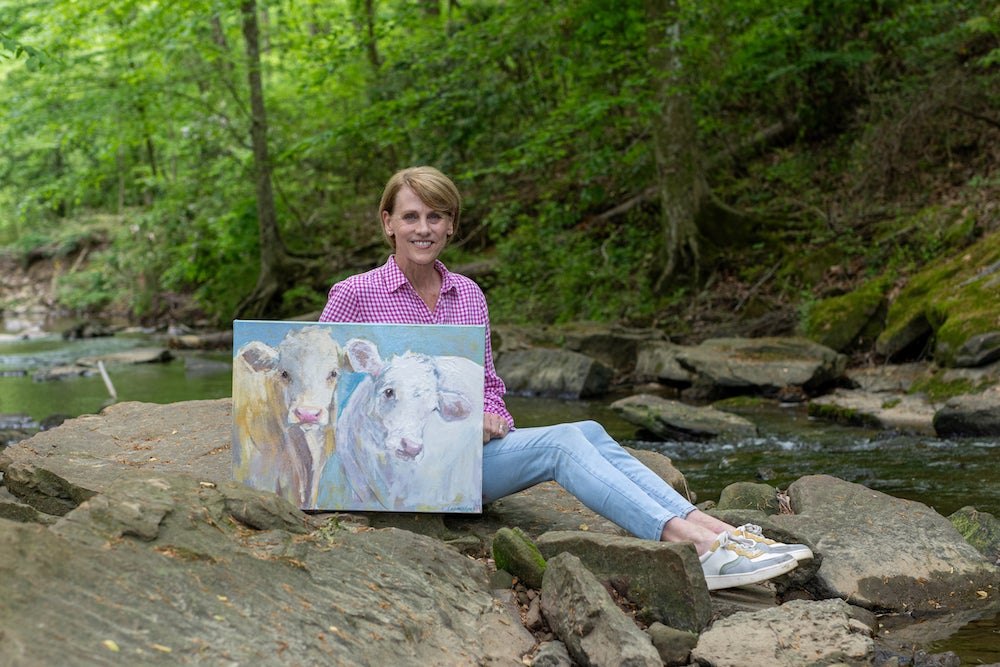
Although she struggled to pay attention in church, Carol says the Lord ignited a catalyst for creation within her over the years as she honed her artistic talents. After graduating from Vestavia Hills High School, Carol attended Birmingham-Southern College, majoring in art education.
She began teaching art at 21 years old at Homewood High School–the place, she says, that instilled in her a desire to share how therapeutic art can be.
“It was so much fun to watch people’s progression–just watching anybody be proud of something that they made,” Carol says. “I was just so thankful to be able to teach at such a great school.”
When Carol welcomed her three sons into the world, she took a step back from teaching and prioritized her time with her children; yet, when her sons became elementary age, Carol felt called to help teach art workshops at her sons’ school and began helping out with the fine arts program.
“I think students need a chance to express themselves through art to make them more well rounded, so they can feel good about themselves,” Carol says. “The main reason I teach is to give back because I feel like others took their time to teach me to paint. It’s wonderful to see people progress and be proud.”
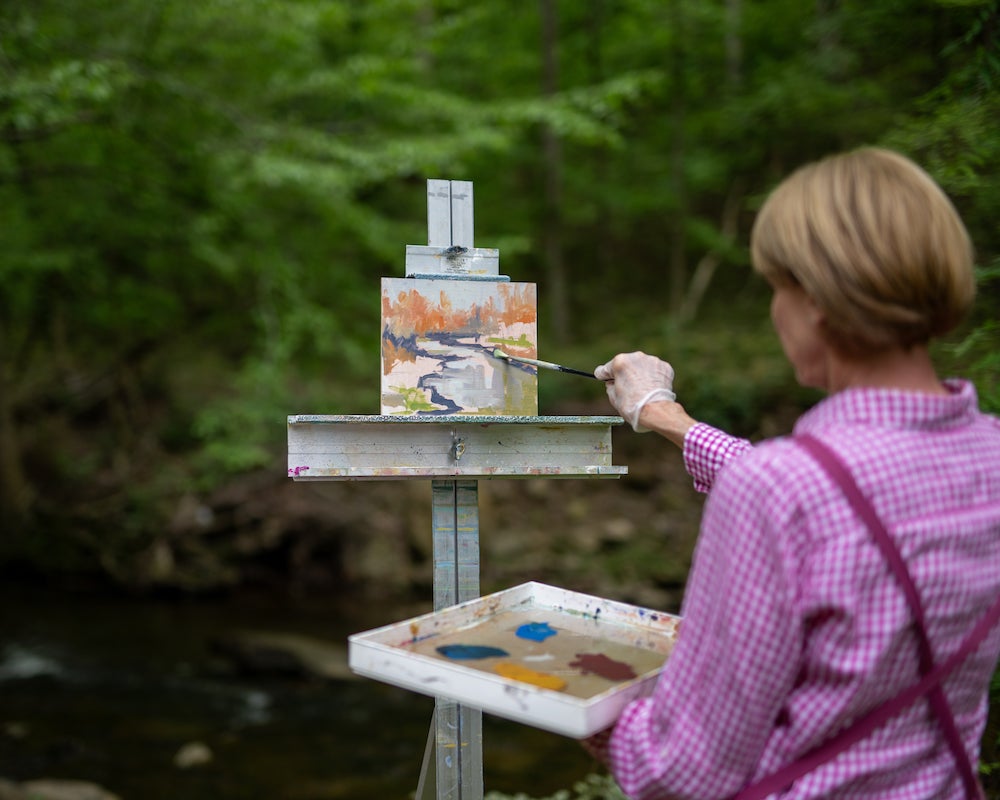
No matter her age or stage in life, Carol says creating art has always been her outlet for expression and means of connecting to other people, helping foster friendships. One such friend, Margie Phelps, is who Carol credits with teaching her how to paint loosely–the hallmark of her art.
Although she studied art in college, Carol says she never grasped the technique of painting loosely until years after her children were in grade school, and she could spend her newfound time painting. Painting loosely–the tight walk between realism and impressionism–is an artistic style grounded in spontaneity and self-expression, utilizing broad brush strokes, bright colors and simplified depictions.
This style of painting focuses on wrangling light, capturing the essence of a subject, not replicating every detail. “Loose” painters are free to defy the confines of color theory and form, enabling them to embrace unpredictability and create their heart’s physical manifestation of colorful, imaginative vitality on the canvas.
Such an aesthetic often portrays a balance of “soft” edges pressed into the canvas through bold, wiley brush strokes. Where realists may see inconsistencies, loose painters see creative expressions of the harmonious fusion between light and color.
The best light, Carol says, will be found outdoors in picturesque sceneries. Glancing around her studio, one will see landscapes of the beach and ocean; portraits of cows, horses and roosters outdoors on farms; and even beautiful depictions of people enjoying nature.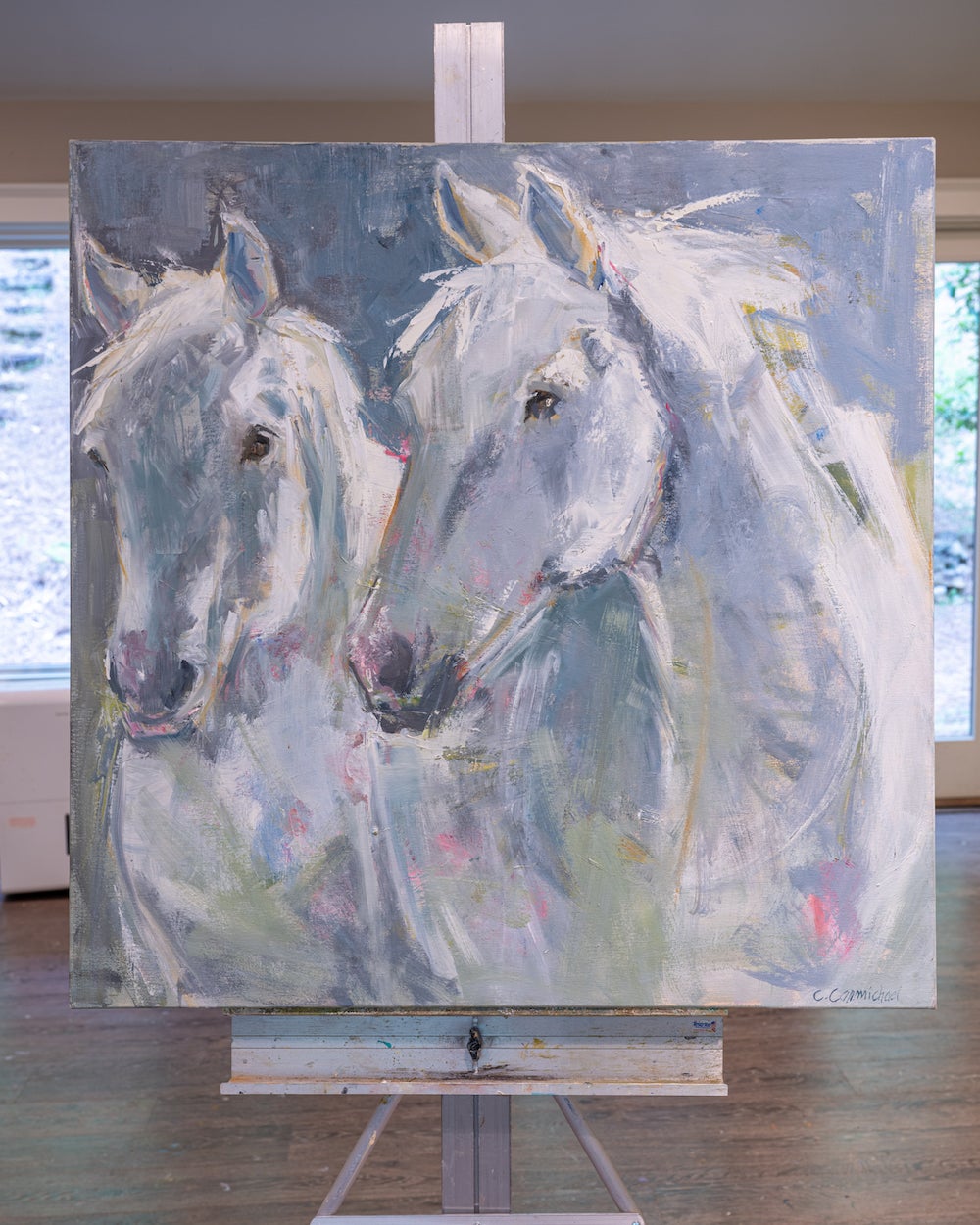
“When we travel [if we see cows], my husband will pull off the road, let me jump out and take some pictures,” Carol says, chuckling. “That is one thing I probably never get tired of painting is cows because they’re just fun to look at.”
While she can paint from photographs, Carol often enjoys spending time painting still-life or straight from memory of some of her favorite moments with her family and friends. Carol’s signature “figurative” series depicts many people enjoying one another’s company–often outdoors at the beach.
“Katie’s Twins” portrays two sweet sisters sitting in shallow water as they gently sway back and forth with the push and pull of the tide. From afar, the painting is a simple but beautiful presentation of fun on the beach; however, the intricate details such as the subtle hues of brown overlapping each other down the girls’ hair lines–showing their wet French braids–give the painting much more depth beyond one’s first glance.
As cameras have advanced stylistically, photographs have become more life-like, but Carol says she is not a photorealist. Painting loosely, in her mind, is a dynamic strategy, allowing her to compose life on the canvas with such vibrant authenticity.
“I prefer oil paints because of the thickness and flexibility,” Carol says. “I prefer to work ‘wet on wet,’ and oil paints dry slower, enabling me to blend paints and correct mistakes. Oil paint is more forgiving than other paints.”
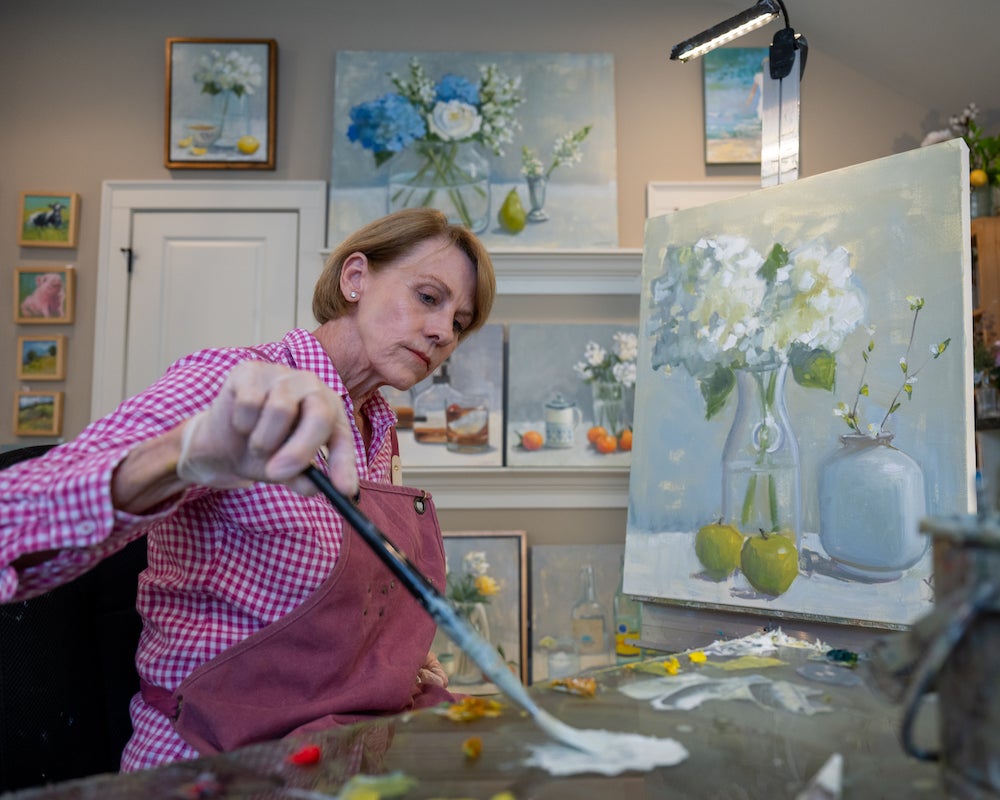
While oil paints take hours–if not days–to dry, Carol says oil paints are the most generous because they are not only the easiest to use in correcting mistakes, but they also yield a shimmery finish, illuminating her work in natural light.
One of Carol’s landscapes, “Wild Beauty,” cleverly blends muted Earth tones hovering over the marsh water like mist humming in an autumn breeze. Hues of burnt orange fading into bundles of mossy-green strokes allude to the cattails bending beneath the gusts of wind bellowing through the marshes.
“My Mama Told Me” depicts two little lambs–whose fluffy coats render the light from the Northwestern rays–resting in a sun-dappled pasture extending past the rolling, pastel-colored hills. Open to interpretation, Carol says her art serves not as exact replicas of her psyche but of how her favorite memories make her feel.
By viewing loose painting as a soul’s conversation with reality, this technique is often referred to as the most “honest” type of painting because it embraces the artistic process, celebrating imperfections as ingenuity–an artist’s authorship in physical form. The real beauty, Carol says, is that it is a technique that can be mastered at any age.
“I’m excited to think that even at my age, I can continue painting and get better and my style may even change,” Carol says. “Art is something that I can leave behind in this world. It’s a little way I can leave a little piece of me.”
While Carol did not master loose painting until she was an adult, she says creating art–no matter the style–is the heart’s way of expressing what words sometimes cannot convey. Everyone has a story to tell.
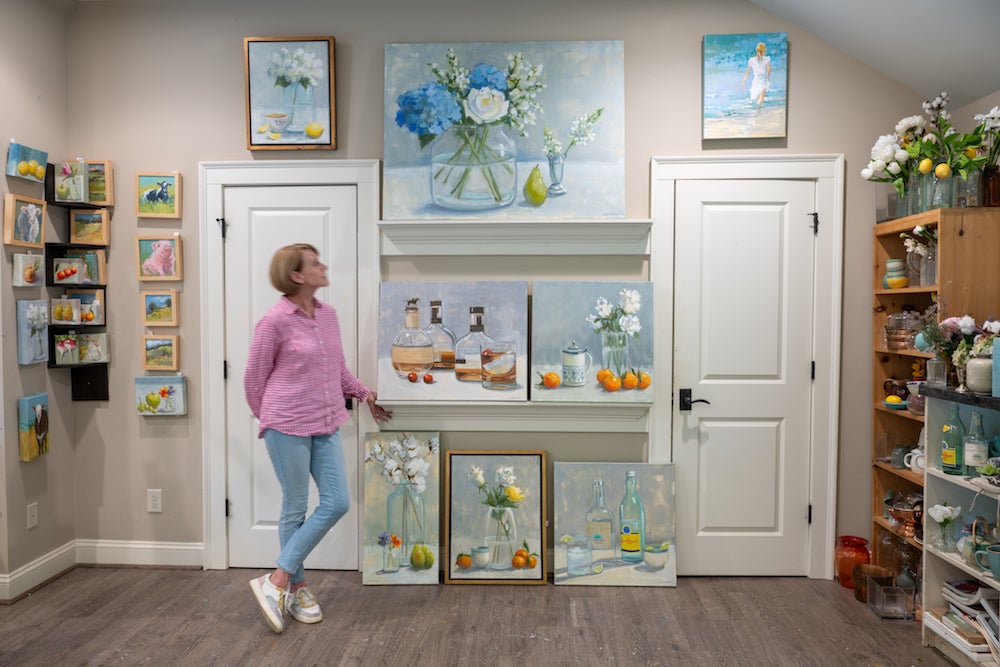
If art is one of the most meaningful gifts one can pass onto future generations, then Carol’s legacy will carry on in the hearts of all her students, inspiring them to paint the beauty in a broken world.
To view and purchase Carol’s work or inquire about commissions, visit carolcarmichaelfineart.com.
Art on the Run
Check out Carol Carmichael’s list of upcoming shows around the Southeast.
Sept. 21-22: Monte Sano Art Festival
Huntsville, Alabama
Oct. 4-6: St. James Court Art Festival
Louisville, Kentucky
Oct. 19-20: The Kentuck Festival of the Arts
Tuscaloosa, Alabama
Nov. 1-3: Greater Gulf Coast Arts Festival
Pensacola, Florida
Nov. 9-10: Three Rivers Art Festival
Covington, Louisiana
March 14-16: Fairhope Arts & Crafts Festival
Fairhope, Alabama
May 3: Art in the Village
Mountain Brook, Alabama

